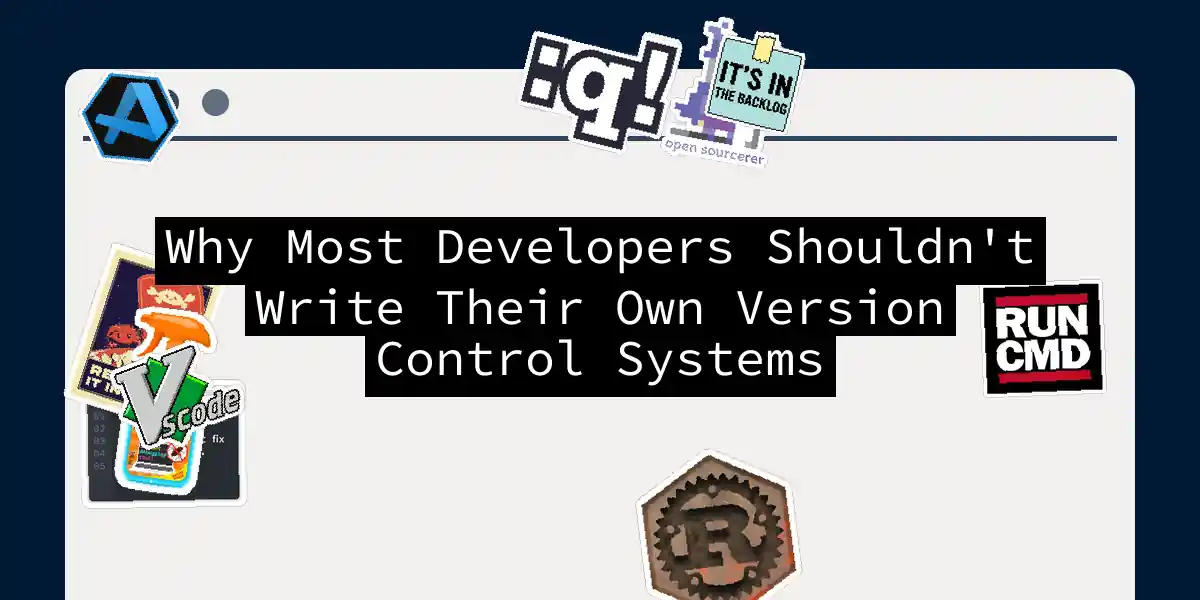The Allure and the Pitfall
In the world of software development, there’s a certain allure to building everything from scratch. It’s like the ultimate DIY project, where you get to be the architect, the engineer, and the handyman all rolled into one. However, when it comes to version control systems, this DIY enthusiasm can quickly turn into a nightmare. Here’s why most developers should steer clear of writing their own version control systems.
Version Control 101
Before we dive into the reasons, let’s quickly cover what version control systems do. These systems allow developers to track changes to their codebase, manage multiple versions, and collaborate seamlessly. They provide a centralized or distributed repository where all changes are recorded, making it easy to revert to previous versions if something goes wrong[2][5].
The Complexity of Version Control
Version control systems are not simple tools. They involve complex algorithms for managing branches, merges, and conflicts. Here’s a simplified sequence diagram to illustrate the process:
Why You Shouldn’t Roll Your Own
1. Time and Effort
Building a version control system from scratch is a monumental task. It requires a significant amount of time and effort that could be better spent on your actual project. Consider the time it takes to develop, test, and maintain such a system. This time could be spent on features that directly benefit your users or on optimizing your existing codebase[2].
2. Expertise and Specialization
Version control systems like Git, Apache Subversion, and Perforce have been developed by teams of experts over many years. These systems have been battle-tested and refined to handle a wide range of scenarios. Unless you have a team of version control specialists, it’s unlikely you’ll be able to match the quality and reliability of these established systems[1][3].
3. Security and Reliability
Security is a critical aspect of any version control system. You need to ensure that your code and other assets are protected from unauthorized access and data loss. Established version control systems have robust security features and backup mechanisms that are hard to replicate without extensive experience in security and data management[2][5].
Here’s a state diagram illustrating the security states of a version control system:
4. Collaboration and Integration
Modern development teams are often distributed across different locations and time zones. Version control systems need to support this kind of collaboration seamlessly. Established systems have features like branching, merging, and conflict resolution that are designed to handle such scenarios efficiently. They also integrate well with other development tools and platforms, making the workflow smoother[2][5].
5. Community Support and Documentation
When you use an established version control system, you benefit from a large community of users and developers who contribute to its documentation, plugins, and support. This community support is invaluable when you encounter issues or need to implement specific workflows. Rolling your own system means you’ll be on your own when things go wrong[1][3].
The Cost of Customization
While it might seem appealing to customize every aspect of your version control system to fit your specific needs, this approach can lead to a lot of hidden costs. Here are a few:
- Training and Onboarding: Custom systems require significant training and onboarding efforts. This can be time-consuming and may lead to resistance from team members who are used to more conventional tools[2].
- Maintenance and Updates: Custom systems need continuous maintenance and updates to keep them secure and functional. This can divert resources away from your main project[1].
- Integration Challenges: Integrating a custom version control system with other tools and platforms can be challenging. This might lead to inefficiencies and disruptions in your workflow[2].
Conclusion
While the idea of building your own version control system might seem exciting, it’s generally not the best use of your time and resources. Established systems like Git, Apache Subversion, and Perforce offer reliability, security, and community support that are hard to match with a custom solution.
In software development, it’s often better to stand on the shoulders of giants rather than trying to reinvent the wheel. So, the next time you’re tempted to roll your own version control system, remember: there are already excellent tools out there that can help you manage your codebase efficiently and securely.
And as the old saying goes, “Don’t fix what ain’t broke.” Unless, of course, you’re looking for a new hobby project that will keep you up all night, wondering why your custom version control system just won’t behave.
